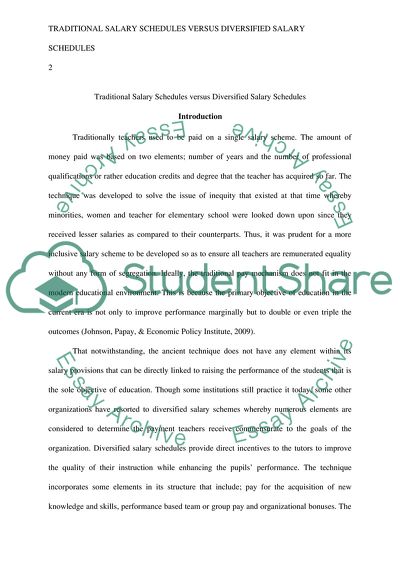Cite this document
(Traditional Salary Schedules versus Diversified Salary Schedules Essay Example | Topics and Well Written Essays - 2000 words, n.d.)
Traditional Salary Schedules versus Diversified Salary Schedules Essay Example | Topics and Well Written Essays - 2000 words. https://studentshare.org/education/1876854-traditional-salary-schedules-versus-diversified-salary-schedules
Traditional Salary Schedules versus Diversified Salary Schedules Essay Example | Topics and Well Written Essays - 2000 words. https://studentshare.org/education/1876854-traditional-salary-schedules-versus-diversified-salary-schedules
(Traditional Salary Schedules Versus Diversified Salary Schedules Essay Example | Topics and Well Written Essays - 2000 Words)
Traditional Salary Schedules Versus Diversified Salary Schedules Essay Example | Topics and Well Written Essays - 2000 Words. https://studentshare.org/education/1876854-traditional-salary-schedules-versus-diversified-salary-schedules.
Traditional Salary Schedules Versus Diversified Salary Schedules Essay Example | Topics and Well Written Essays - 2000 Words. https://studentshare.org/education/1876854-traditional-salary-schedules-versus-diversified-salary-schedules.
“Traditional Salary Schedules Versus Diversified Salary Schedules Essay Example | Topics and Well Written Essays - 2000 Words”. https://studentshare.org/education/1876854-traditional-salary-schedules-versus-diversified-salary-schedules.


